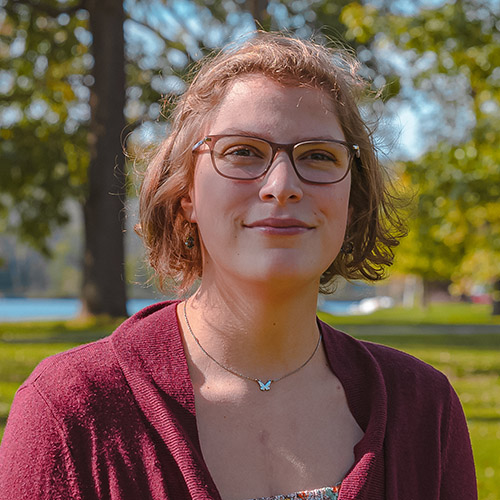
Lithesome and blue-eyed with a ponytail that swings wildly as she runs, Lizzy Jewiss is a driven young athlete. In seventh grade she decided to take up running to stay in shape for soccer.
When the track coach saw Lizzy working out, he approached her about going out for the track team. As an eighth grader she joined Marathon’s varsity cross-country team and made it to the New York State Championships. Jewiss, now a senior, has competed in the state finals every year since eighth grade and has been ranked in the top ten in cross-country for class D schools in New York State.
In February 2011, when Jewiss was at the peak of her training, she decided to maximize her performance over the next few months. “I wanted to prepare for outdoor track in my junior year,” she says. “I wanted to hit all of the record times.” Her coach and Marathon High School athletics director, Todd James, suggested that she make an appointment with Dr. Andrew Getzin at the Endurance Sports Performance Lab at Cayuga Medical Center Sports Medicine and Athletic Performance. As it turned out Jewiss and Getzin were old friends. She had seen him for a number of injuries over the years, among them a broken wrist from slipping on the gym floor, pulled abdominal muscles from a game of floor hockey, and tendon separation in her foot from a nasty encounter with a recliner chair. Most of these injuries occurred just weeks before major track meets but with Getzin’s help this determined runner inevitably bounced back in time to compete.
Jewiss followed her coach’s suggestion and went to the Endurance Sports Performance Lab. She subsequently went on to break all of the women’s indoor track records at Marathon High School for distances from 400 to 3,000 meters.
Getting the data
While Jewiss ran on the treadmill, Getzin and his colleagues collected data on her heart rate and oxygen uptake levels during VO2-max (maximal oxygen uptake) testing. When used properly this information provides excellent parameters for fitness and is helpful for endurance athletes who want to improve their performance. Jewiss’s treadmill test provided some interesting findings.
A training regimen for someone like Jewiss involves a rotating schedule of days designated for easy runs, long-distance runs, and short runs. “I learned that on the days I was doing my easy runs, I was running way too fast,” says Jewiss. “So Dr. Getzin told me to wear a heart monitor during training to guide the intensity and pace of my running. By slowing down during my easy runs I was able to work harder on the days I had my hard, fast runs because I had less recovery from the day before.”
“Lizzy learned that you can still make positive gains on days when you aren’t putting extreme stress on your body,” Getzin observes. “You have to get enough rest to be able to run hard when you want to run hard. This is a training mistake a lot of athletes make.”
Getzin recently had the seventeen-year-old Marathon High School senior running on the treadmill in the performance lab. Jewiss is currently recovering from a stress fracture in her leg that occurred during the 2012 outdoor track season. “I ignored the injury because I didn’t want to stop running,” she confesses with a guilty smile. “When I finally took care of it I was out for three weeks, so I water trained. I want Dr. Getzin to retest me this coming spring to get a better sense of my fitness and how well I’ve recovered from the stress fracture.”
“The challenge in training,” Getzin explains, “is that you walk a tightrope between training and over-training. For an athlete the goal is to increase your training stress to a sufficient level that will allow your body to successfully adapt to the new load without injury. In the performance lab we help athletes maximize their performance by providing them with good data to improve their outcomes. Lizzy Jewiss is wonderful to work with,” he adds. “She is a high-level, highly motivated athlete. She’s also had excellent coaching.”
“One of the things that’s most helpful about Dr. Getzin is that he’s an athlete and he understands that getting back to running quickly is very important to me,” says Jewiss. She remembers when she broke her wrist there were concerns raised that maybe she shouldn’t run until it was healed. “But when I saw Dr. Getzin, he said I could run with my wrist in a cast; I just had to be cautious not to fall and re-injure myself. He understood that I needed to run!” Indeed, it seems running is what Lizzy Jewiss was born to do.
what our patients are saying
“I have been a Hemo dialysis patient for almost Five years. Prior to dialysis and during dialysis I have had several trips to the ER, due to other health issues & was admitted to CMC more than a few times. Each and every time I’ve been there, whether in patient or out, I have been treated with respect, professionalism, and efficiency. I give this hospital 2 thumbs up!! Thank you CMC for taking care of me all these years!!”
“I have had many occasions visiting CMC for myself and family. We have never had a bad experience there at all. Last October I had surgery and the nurses were amazing especially my night nurse. Thank you to all CMC staff for doing what you do every day with a smile.”
“I have to say the last couple visits that I’ve had here have been wonderful. About a month ago I had an EGD and the staff were amazing! Explained everything in detail and made me feel at ease. I was very nervous and the nurse I had was very comforting. Tonight we had to take my son to the emergency room and they were awesome with him! We got right in. “
“The staff and accommodations at Cayuga Birthplace are amazing!!! This is what it I imagine it would feel like to be a celebrity getting VIP treatment. I wish I could stay longer – even the food options are 5 Star! The amenities are great. Everything is clean and designed beautifully. Not a single complaint, only praises!”








